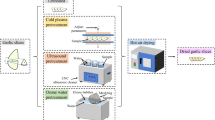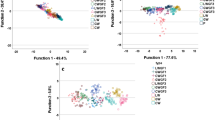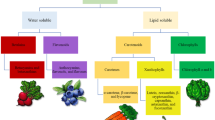Abstract
Rheological characteristics and physicochemical properties of ice cream mix flavored with black tea or some herbal teas and sensory profile of flavored ice cream was investigated. In this respect, black tea and three different herbal tea samples (sage, chamomile, and linden) were used to produce a new ice cream formulation. Some physicochemical properties and sensory characteristics of samples were determined. Total phenolic content of ice cream samples increased with the use of tea or herbal teas and it was in the range of 123.37–415.20 mg kg−1. Incorporation of black tea and herbal tea except chamomile decreased the sensory scores of ice cream compared to control sample. The apparent viscosities of samples were measured as a function of shear rate and consistency coefficient and flow behavior index were calculated by using power law model. All ice cream mix samples showed non-Newtonian pseudoplastic behavior. The apparent viscosities of ice cream mixes treated with no tea at the shear rate of 50 s−1 were 1.13, 0.91, and 0.76 Pa s at 10, 20, and 30 °C, respectively. The activation energy for the viscosity change of the samples ranged between 10.87–20.25 J mol−1 at 50 s−1.




Similar content being viewed by others
References
Akalin, A. S., Karagozlu, C., & Unal, G. (2008). Rheological properties of reduced fat and low fat ice cream containing whey protein isolate and inulin. European Food Research and Technology, 227, 889–895.
Akin, M. B., Akin, M. S., & Kirmaci, Z. (2007). Effects of inulin and sugar levels on the viability of yogurt and probiotic bacteria and the physical and sensory characteristics in ice cream. Food Chemistry, 104, 93–99.
AOAC. (2002). Official Methods of Analysis (17th ed.). Arlington: Association of Official Analytical Chemists, Inc.
Aydın, S., Öztürk, Y., Baser, K. H. C., Kırımer, N., & Kurtaröztürk, N. (1992). Effects of Alcea pallida L (A) and Tilia argentea Desf Ex Dc infusions on swimming performance in mice. Phytotheraphy Research, 6, 219–220.
Bourne, M.C. (2002). Physics and texture. In Chapter 3, Food texture and viscosity. concept and measurement. Harcourt Place, London, UK: Academic Press (pp.59-106).
Çelik, Ş., Cankurt, H., & Doğan, C. (2010). Safran ilavesinin sade dondurmanın bazı özelliklerine etkisi. Gıda, 35(1), 33–39.
Cody, T. L., Olabi, A., Petingell, A. G., Tong, P. S., & Walker, J. H. (2007). Evaluation of rice flour for use in vanilla ice cream. Journal of Dairy Science, 90, 4575–4585.
Demirci, M. & Simsek, O. (1997). Süt İşleme Teknolojisi, Hasad Yayıncılık Ltd. Şti. Rebel Ofset, Istanbul, 246 pp (Turkish).
Dervisoglu, M. (2006). Influence of hazelnut flour and skin addition on the physical, chemical and sensory properties of vanilla ice cream. International Journal of Food Science and Technology, 41, 657–661.
Dervisoglu, M., & Yazici, F. (2001). Kolalı dondurma üretimi. Turkish Journal of Agriculltural and Forestry, 25, 283–289.
Dervisoglu, M., & Yazici, F. (2006). The effect of citrus fibre on the physical, chemical and sensory properties of ice cream. Food Science and Technology International, 12(2), 159–164.
Dogan, M., & Kayacier, A. (2004). Rheological properties of reconstituted hot salep beverage. International Journal of Food Properties, 7(3), 683–691.
Dogan, M., & Kayacier, A. (2007). The effect of ageing at a low temperature on the rheological properties of Kahramanmaraş-type ice cream mix. International Journal of Food Properties, 10, 19–24.
El-Nagar, G., Clowes, G., Tudoricá, C., Kuri, V., & Brennan, C. S. (2002). Rheological quality and stability of yog-ice cream with added inulin. International Journal of Dairy Technology, 55(2), 89–93.
Elshobaka, F. A., Saleh, Z. A., & Saleh, N. (1990). The effect of some beverage extracts on intestinal iron-absorption. Zeitschrift für Ernährungswissenschaft, 29, 264–269.
Falguera, V., & Ibarz, A. (2010). A new model to describe flow behavior of concentrated orange juice. Food Biophysics, 5, 114–119.
Friedeck, K. G., Karagul-Yuceer, Y., & Drake, M. A. (2003). Soy protein fortification of a low-fat dairy-based ice cream. Journal of Food Science, 68, 2651–2657.
Frost, M. B., Heymann, H., Bredie, W. L. P., Dijksterhuis, G. B., & Martens, M. (2005). Sensory measurement of dynamic flavour intensity in ice cream with different fat levels and flavourings. Food Quality Preference, 16, 305–314.
Goh, K. K. T., Ye, A., & Dale, N. (2006). Characterisation of ice cream containing flaxseed oil. International Journal of Food Science & Technology, 41, 946–953.
Guner, A., Ardic, M., Keles, A., & Dogruer, Y. (2007a). Characterisation of ice cream containing flaxseed oil. International Journal of Food Science and Technology, 41, 946–953.
Guner, A., Ardic, M., Keles, A., & Dogruer, Y. (2007b). Production of yoghurt ice cream at different acidity. International Journal of Food Science and Technology, 42, 948–952.
Hoerhammer, L., Wagner, H., & Salfner, B. (1960). Diuretic principle from Herniaria glabra. Naturwissenchaften, 47, 63–64.
Hwang, J. Y., Shyu, Y. S., & Hsu, C. K. (2009). Grape wine lees improves the rheological and adds antioxidant properties to ice cream. Lebensmittel-Wissenschaft und Technologie, 42, 312–318.
Icier, F., & Tavman, S. (2006). Ohmic heating behaviour and rheological properties of ice cream mixes. International Journal of Food Properties, 9(4), 679–689.
Ioki, K. & Suzuki, S. (1992) Ice cream and method of manufacturing. United States Patent, 5171601.
Kaya, S., & Tekin, A. R. (2001). The effect of salep content on the rheological characteristics of a typical ice-cream mix. Journal of Food Engineering, 47, 59–62.
Kus, S., Altan, A., & Kaya, A. (2005). Rheological behavior and time-dependent characterization of ice cream mix with different salep content. Journal of Texture Studies, 36, 273–288.
Liebert, M., Licht, U., Böhm, V., & Bitsch, R. (1999). Antioxidant properties and total phenolics content of green and black tea under different brewing conditions. Zeitschrift fuer Lebensmittel Untersuchung und Forschung A, 208, 217–220.
Marcotte, M., Hoshahili, T., & Ramaswamy, A. R. (2001). Rheological properties of selected hydrocolloids as a function of concentration and temperature. Food Research International, 34(8), 695–704.
Martinou-Voulasiki, I. S., & Zerfiridis, G. K. (1990). Effect of some stabilizers on texture and sensory characteristics of yoghurt ice cream from sheep’s milk. Journal of Food Science, 55, 703–707.
Muhtasib, H.G. (2006). Anticancer and medicinal properties of essential oil and extracts of East Mediterranean sage (Salvia triloba) page 171 Chapter in Advance in Phytomedicine. Vol 2, Lead molecules from natural products, Ed. By Khan M. T. and Ather. A.Netherlands, Elsevier Press. (pp 171).
Neuwald, F. (1952). The spasmolytic fraction of the camomile blossom. Zeitschrift fur Naturforschung, 7b, 60.
Ozturk, I., Golec, A., Karaman, S., Sagdic, O., & Kayacier, A. (2010). Evaluation of listeria monocytogenes survival in ice cream mixes flavored with herbal tea using taguchi method. Foodborne Pathogens and Diseases, 7(10), 1263–1267.
Ramshaw, E. H. (1985). Aspects of the flavor of phenol, methylphenol and ethylpenol. CSIRO Food Research Quarterly, 45, 20–22.
Sagdic, O., Ozturk, I., Cankurt, H., & Tornuk, F. (2011). Interaction between some phenolic compounds and probiotic bacterium in functional ice cream production. Food and Bioprocess Technology. doi:10.1007/s11947-011-0611-x.
SAS. 1988. SAS/STAT User’s Guide (6.03), SAS Institute Inc., Cary, NC.
Soukoulis, C., & Tzia, C. (2008). Impact of the acidification process, hydrocolloids and protein fortifiers on the physical and sensory properties of frozen yogurt. International Journal of Dairy Technology, 61, 170–177.
Soukoulis, C., Lebesi, D., & Tzia, C. (2009). Enrichment of ice cream with dietary fiber: Effects on rheological properties, ice crystallization and glass transition phenomena. Food Chemistry, 115, 665–671.
Szalontai, M. (1977). Study of the antimycotic effects of biologically active components of Matricaria chamomilla L Parfum. Kosmet, 58(5), 121–127.
Tekinsen, O. C. (1987). Dondurma Teknolojisi. Tübitak Yayin No 632, VHAG-22. Ankara: Tübitak (Turkish).
Turkish Standart Institue. 1992. Ice Cream Standart-4265.
Viola, H., Wolfman, C., Destein, M. L., Wasowski, C., Pena, C., Medina, J. H., et al. (1994). Isolation of pharmacologically active benzodiazepine receptor ligands from Tiliatomentosa (tiliceae). Journal of Ethnopharmacology, 44, 47–53.
Weisburger, H. J., Rivenson, A., Reinhardt, J., Aliaga, C., Braley, J., Pittman, B., et al. (1998). Effect of black tea on azoxymethane-induced colon cancer. Carcinogen, 19, 229–232.
Yesilsu, A. F. (2006). Dondurmanın Fiziksel, Kimyasal ve Duyusal Özellikleri Üzerine Bazı Pekmez Çesitlerinin Etkisi, Yüksek Lisans Tezi, OnDokuz Mayıs Üniversitesi, Samsun (MSc. Thesis, Turkish)
Yilsay, T. Ö., Yilmaz, L., & Bayizit, A. A. (2006). The effect of using a whey protein fat replacer on textural and sensory characteristics of low-fat vanilla ice cream. European Food Research and Technology, 222, 171–175.
Acknowledgment
Authors would like to thank Erciyes University Research Project Unit for the financial support of the work.
Author information
Authors and Affiliations
Corresponding author
Rights and permissions
About this article
Cite this article
Karaman, S., Kayacier, A. Rheology of Ice Cream Mix Flavored with Black Tea or Herbal Teas and Effect of Flavoring on the Sensory Properties of Ice Cream. Food Bioprocess Technol 5, 3159–3169 (2012). https://doi.org/10.1007/s11947-011-0713-5
Received:
Accepted:
Published:
Issue Date:
DOI: https://doi.org/10.1007/s11947-011-0713-5




